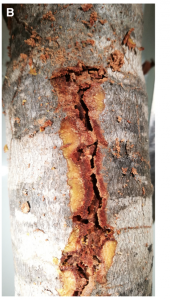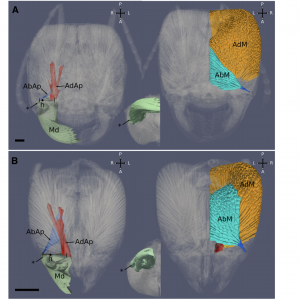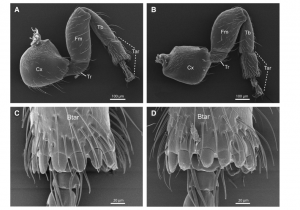Note added Jan 2019: These positions have been filled. Thank you for your interest.
We’re hiring! Please see the ad below and get in touch if you are interested:
The Economo Lab (http://arilab.unit.oist.jp/) at the Okinawa Institute of Science and Technology Graduate University (http://www.oist.jp/) is seeking qualified applicants for two technician positions. The lab works at the interface of ecology, evolution, and natural history, with an empirical focus on ant biodiversity. We use a variety of approaches to understanding biodiversity including field expeditions, collections-based research, x-ray micro-CT, 3D modeling and morphometrics, phylogenomics, biodiversity informatics, and quantitative theory. Although two positions are described below, we are flexible with regards to division of duties among the two hired individuals.
RESEARCH TECHNICIAN:
Description: The hired individual will get involved with a number of research activities in the lab including: curating an entomological research collection, managing lab databases, procuring lab supplies and materials, and performing miscellaneous tasks to support lab research. In addition, there are exciting opportunities to become an expert in X-ray micro-CT scanning and downstream applications such as segmentation, 3D modeling (e.g. see our gallery online), morphometrics, 3D printing, and interacting with biodiversity data in virtual and augmented reality.
Qualifications: An undergraduate degree or higher in a scientific or technical field and experience with scientific research are required. Although there is no requirement for proficiency in a specific computational program/language, it is important that the person has strong computational skills and a high ability to learn different software and methods independently. Although not required by any means, experience with any of the following would be highly desirable: biodiversity collections management, 3D modeling, 3D animation, data management, computational phylogenetics, geometric morphometrics, GIS, HPC, VR/AR applications.
RESEARCH COMPUTING TECHNICIAN:
Description: The hired individual will be responsible for computational support of lab research including; designing and maintaining research databases, maintaining lab websites, assist with design and maintenance of bioinformatic data analysis pipelines, application support for utilizing HPC resources, and desktop support to lab members. In addition, there are opportunities to lead or participate in development of new technologies that facilitate and accelerate biodiversity research.
Qualifications: An undergraduate degree or higher in a scientific or technical field and experience with scientific research computing are required. As this position is not tied to a single application or task, the ideal candidate would have a good baseline of programming skills, including familiarity with both compiled and interpreted languages, and ability to learn independently. Proficiency with Linux, SQL-based database design and administration, and at least basic familiarity with server administration are required. Experiences with one or more of the following would be highly desirable but are not required; GIS, bioinformatics, phylogenetics, ecoinformatics, parallel computing, and statistical computing
Job Data: OIST is a newly established international graduate university located in the resort area of Onna-son, Okinawa, Japan, and offers a high quality of life and good working conditions in an international environment. Logistical and financial assistance with relocation will be provided, along with a competitive salary and benefits package. OIST is an English-language working environment, so knowledge of Japanese is not necessary.
To apply, please send a cover letter, CV, and list of three references with contact information to <economo@oist.jp> in an email with subject “Research Technician Application” or “Research Computing Technician Application”, as appropriate. Informal inquiries are also welcome at the same address. Application review will begin immediately and will remain open until the positions are filled.





